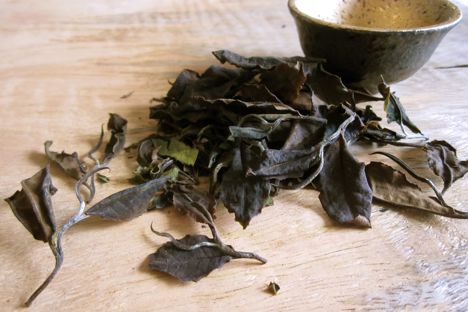
Reading the leaves: the world of exotic tea
Discover some of the more unusual varieties of tea out there and find out how easy it is to make the switch from bags to loose leaf.
Reading the leaves: the world of exotic tea
Discover some of the more unusual varieties of tea out there and find out how easy it is to make the switch from bags to loose leaf.
We’re not sure we could imagine a world without tea. Despite being grown and harvested from the far-flung corners of the world (although there are tea plantations in Cornwall and Scotland now), it’s regarded as the most British drink in existence. An incredible sixty-six percent of people we surveyed drink tea every single day, and nearly a third of those drank between three and five cups. It’s certainly something we hold dear to our hearts.However, it seems like we tend to stick to what we know, too. Almost all of the people we surveyed – ninety-four percent, to be exact – only use teabags, and ninety-one percent get all their tea from the supermarket. This means most of us are stuck with a selection of low quality leaves, ground down and put into bags (which are often destined for the landfill), with only a few different varieties at their disposal. There are so many different teas out there just waiting to be discovered which can’t be found in bags or the supermarkets.
Our cup of tea
Of course, black tea is probably always going to be the UK’s favourite tea by a country mile. But as well as the traditional English Breakfast, there are black teas like Assam, Earl Grey, Darjeeling and Lapsang Souchong that all taste wildly different. Fruit, herbal, green and even white teas are no longer the enigma they once were, with the people we surveyed saying they enjoyed them at the weekends or just before bed to help them nod off. But hardly anyone we talked to had tasted or even heard of red, yellow and oolong varieties.
If you’re feeling adventurous and want to try some of the more unusual varieties of tea out there (or know someone who would), then there’s plenty of ways to get your hands on some. There are specialist shops up and down the country, full of shelves heaving with different blends, infusions and leaves from all corners of the world. Online retailers are also good for their wide selection and speedy delivery. If you know you want to try something new but don’t know where to begin then there are tea subscription services, like Whittard of Chelsea’s Tea Tour, where you’ll get two different types of tea in the post every month with all the information you need to enjoy them to their full potential. But remember, the majority of high quality teas don’t come in bags, so you may need to change your brewing habits slightly. All you need is a teapot to let the leaves unfurl and infuse, or one of the many leaf strainers that go right into your cup.
Here’s just some of the more unusual teas which are just begging to be discovered.
Also known as rooibos or redbush, red tea isn’t actually a tea at all, but is in fact made from the leaves of a red bush found in South Africa. It’s naturally caffeine-free, meaning it’s perfect for drinking before bed, and the flavour is generally fruity, mild, smooth and herbal. It’s picked and processed in exactly the same way as regular tea, and can either be taken neat, with a dash of milk or with a slice of lemon. The fruitiness of red tea means it’s often included in blends with black teas to create exciting flavour combinations.
Yellow tea is quite unusual and rare, which makes it the perfect variety for seeking out and steeping. It’s made in the same way as green tea, but is allowed to oxidise slightly under damp cloths, which turns the leaves yellow and accentuates the grassy, straw-like, smoky notes. It’s very high in antioxidants and low in caffeine and is only made in China’s Anhui, Sichuan and Hunan provinces in tiny quantities, so every cup is special.
A very traditional Chinese tea, Oolong tastes like a cross between a floral green tea and a strong, warming black tea. The leaves are allowed to oxidise slightly before being dried to lock in the unique flavours. It’s one of the most complex varieties out there, and regarded by many as the connoisseur’s choice.
This tea is processed in a special way which lets the leaves ferment after they’ve been dried. It is then left to mature and over the years the bitter, fresh flavours are transformed into rich, mellow, dark notes which are highly complex – not too dissimilar from aged whisky or wine. The flavour constantly evolves and changes, meaning the first cup you make from a packet might not be the same as the last, and the flavours can vary hugely depending on where the leaves were grown, how old they are, how they’ve been stored and the way they were processed.


